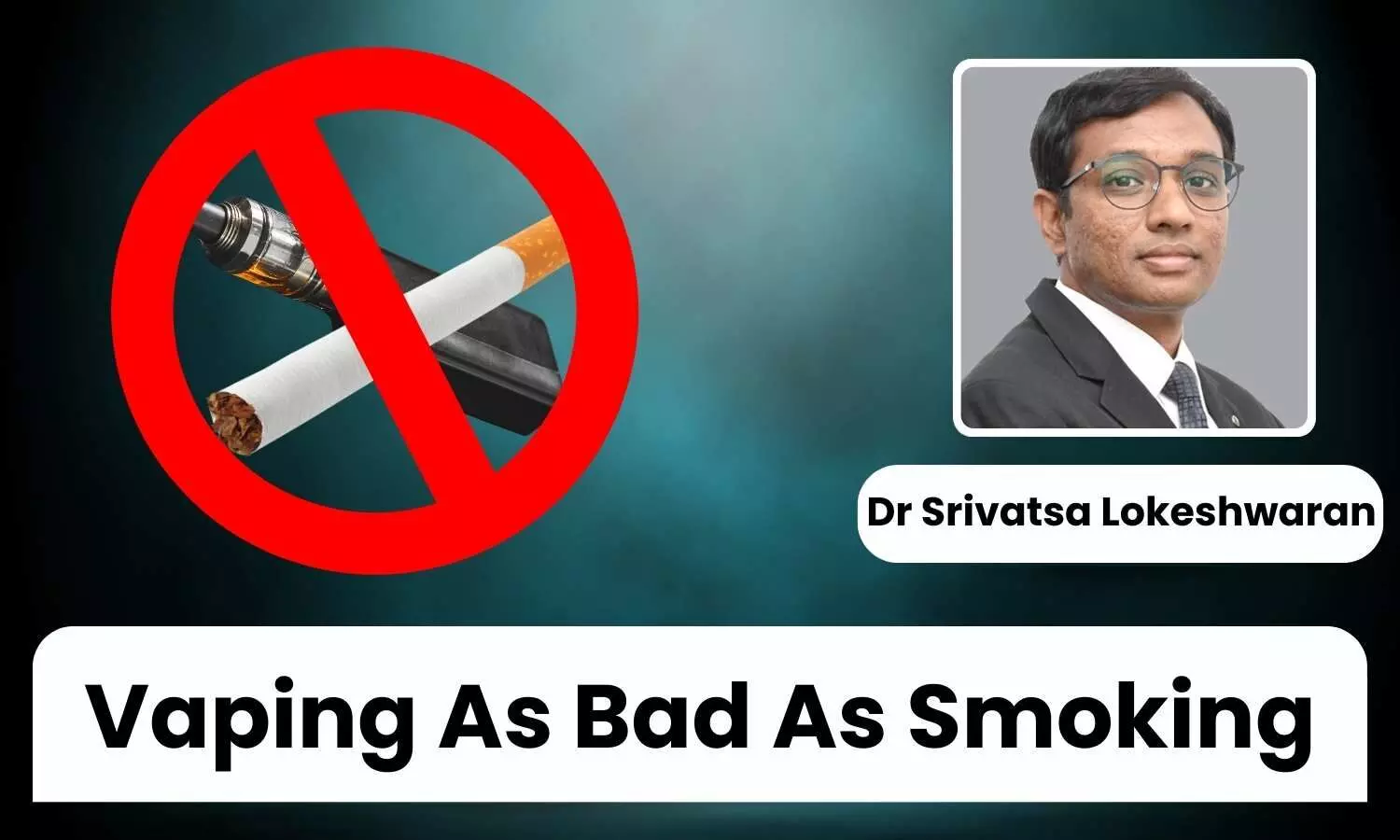Vaping As Bad As Smoking: Doctor Gives Seven Pointers - Dr Srivatsa Lokeshwaran

Recently, there has been an increased use of vaporizers among youths. Vaping is incorrectly perceived by some as less dangerous, which can prove to be fatal. Here’s why:
1. Harmful Chemicals Found in Vaping - The e-cigarette devices used for vaping work by ‘heating up’ a liquid to create a special vapour which can be inhaled. In other words, it is a variant of steam inhalation, but one that cannot be conceived as something even remotely innocent. Among the toxic substances found in the vapour are nicotine, carbon monoxide, formaldehyde and hydrogen cyanide. These chemicals contribute towards causing serious health issues which mostly damage the lungs and the respiratory system.
2. Deceptive Flavours - Because these are packaged under attractive names like sour apple, sweet banana and chocolate espresso, it ends up appealing the people. E-cigarette flavours may sound fun and harmless, but they hide life-threatening agents like cytotoxins and carcinogens which, when taken in high doses, can cause cancer.
3. Second-Hand Vapour Remains Hazardous - Similar to conventional tobacco cigarettes, second-hand exposure to electronic cigarette vapours is hazardous as well. The vapour exhaled by users contains the same harmful chemicals as the vapour they inhale. Thus, other people who might be around, including children and non-smokers, also harbour the risk of attaining respiratory problems or other health complications.
4. Vaping Does Not Help Quit Smoking - There is a prevalent belief that vaping helps smokers quit cigarettes, but the belief is actually flawed. Most of those who try e-cigarettes to quit smoking become dual-users, and they keep on smoking traditional cigarettes besides using e-cigarettes. Rather than reducing their addiction, people transfer it to another harmful product.
5. Vaping Can Lead to More Dangerous Substance Use - The nicotine in e-cigarettes is highly addictive, potentially leading users down a dangerous path. Many find e-cigarettes to be the gateway to more addictive and destructive substances. What perhaps starts as an innocent habit, rapidly escalates into the consumption of illegal drugs, with severe results on health and legality.
6. The Rising Trend of Vaping among Teenagers - Vaping has been on the rise among teens, prompting serious concern. U.S. Surgeon General reports that within a span of 30 days, 21% of 12th graders inhaled nicotine through vaping. This trend started back in 2017 when it was only 10%. Even 6th graders are catching up with the same that is reversing years of progress made in reducing youth tobacco use.
7. Vaping Can Damage Teenagers’ Brains - Brain development is negatively affected by exposure to nicotine at such a young age, impairing cognition, reasoning, and attention. Vaping on a regular basis is harming critical mental processes, while impeding cognitive development, leading to poor learning concentration and decision-making among young individuals.
Contrary to popular belief, there is nothing innocent about vaping. It is not just a substitute for tobacco, and they contain harmful chemicals that are deadly for the body when consumed regularly. It also includes addiction risk and hindrances against brain growth. This makes it incumbent upon parents, teachers, and medical practitioners to initiate measures aimed at enlightening teenagers on the risks posed by vaping.


